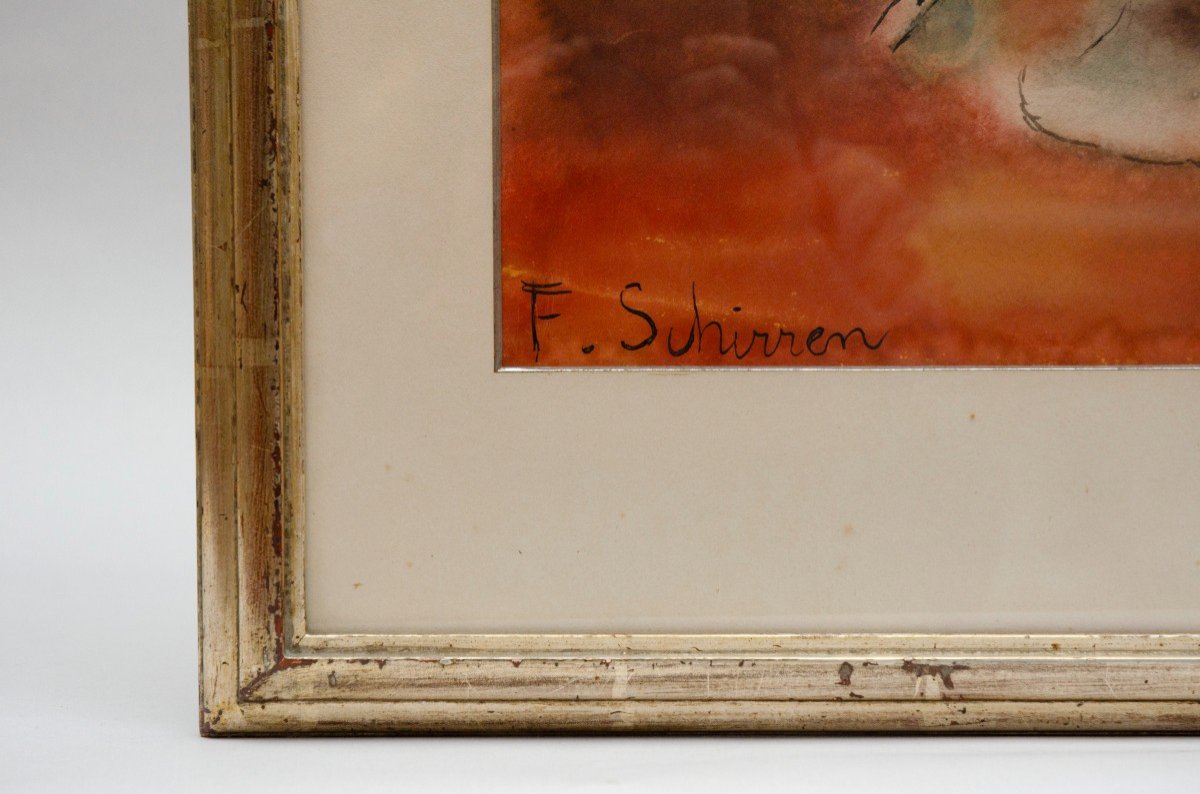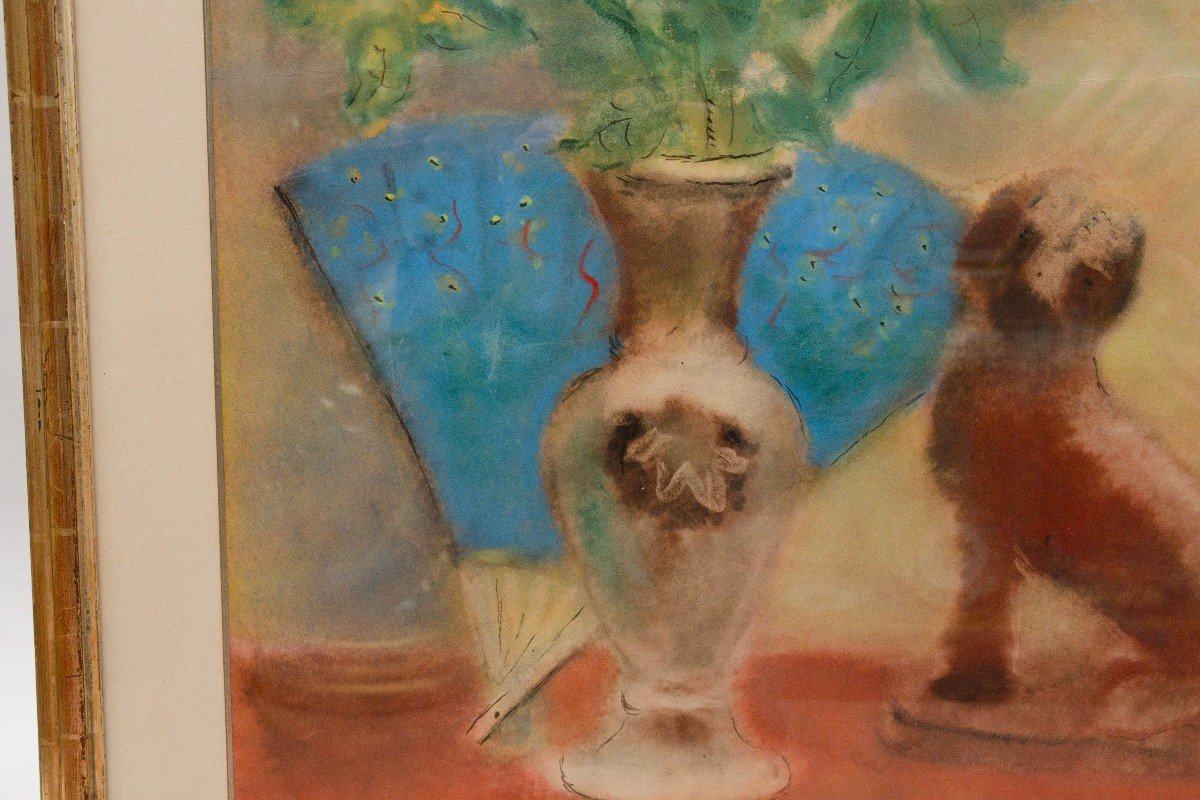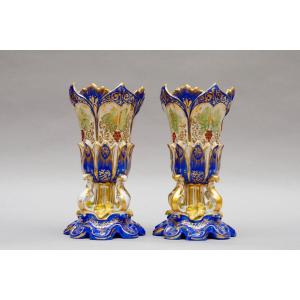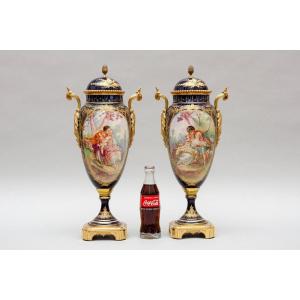Dimensions: H 57 cm x W 48 cm – H 75 cm x W 65 cm
Belgian school circa 1930.
Lit: Ferdinand Schirren, born in Antwerp in 1872 and died in Brussels in 1944, was a Belgian Fauvist painter and sculptor. Born into a Jewish family from Riga (Latvia), he studied sculpture at the Brussels Academy under Jef Lambeaux. He then began painting in watercolour, at a time when many young Belgian artists were becoming aware of the experiments of the Fauves. During his student years, the young Schirren moved towards a synthesis of realistic volume. In 1896, he began working as a freelance artist and embarked on a career rich in experience and inspiration. In 1898, together with Louis Thévenet and Willem Paerels, he founded the ‘Le Labeur’ circle, where he exhibited every year until the group disbanded in 1907. He then simplified the forms and rendered them in large flat areas of colour. Schirren’s development was more rapid in his watercolours than in his paintings. He used colour as if it were an element directly involved in the composition. He endeavoured to build up the colours, to model them so as to give them an architectural structure through which he depicted a world imbued with great interiority. In 1910, he took part in triennial exhibitions in Ghent, Liège and Antwerp, and in those of L’Art Contemporain, La Libre Esthétique, Les Indépendants and Le Sillon. In 1912, he organised a solo exhibition at the ‘Koninklijk Verbond van Kunst, Letteren en Wetenschappen’ in Antwerp, where he presented most of his Whites and Blacks, some Impressionist works and a few sculptures. In the same year, Rik Wouters exhibited his work at the opening of the Galerie Georges Giroux in Brussels; Schirren was also represented there with a few drawings. In the meantime, Schirren moved to Brussels. His paintings made him one of the leading representatives of the movement that would later be known as Brabant Fauvism, alongside Rik Wouters. The impressive series of paintings he assembled for his major exhibition at Giroux in 1917 led art critics to recognise Schirren as a leader. These works bear witness to a constructivist spirit; the last ones are based on this type of well-conceived composition, based on contrasts of light and shadow. In 1919, Schirren became a member of the new group of painters, the Cercle des XV. He continued to give preference to light, pure colours, but at the same time distanced himself from expressionism. From 1927, the artist developed a new watercolour technique. By soaking the paper for a long time in water, he gave it an absorbent quality. This spread the colour pigments over the paper and gave his composition a soft, padded effect. By around 1930, Ferdinand Schirren had achieved a more sober, uncluttered, balanced and emotionally intense art, thanks to his dedication to his style and his desire to make a name for himself.
Works in the Fine Arts Museums of Antwerp and Brussels, including ‘Woman at the Piano’ (1917), considered to be his masterpiece.
The Royal Museums of Fine Arts of Belgium in Brussels devoted an exhibition to this artist from November 2011 to March 2012.




































 Le Magazine de PROANTIC
Le Magazine de PROANTIC TRÉSORS Magazine
TRÉSORS Magazine Rivista Artiquariato
Rivista Artiquariato